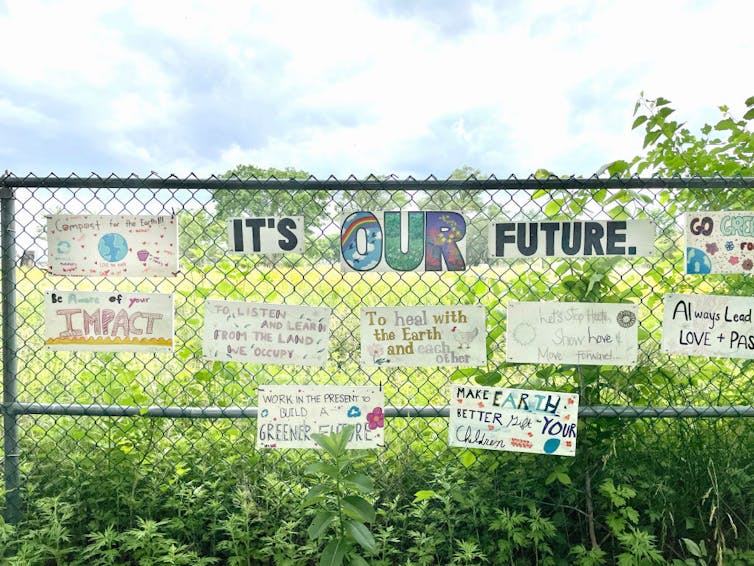President Joe Biden took office in January 2021 amid a devastating pandemic that has seen more than 24 million cases of COVID-19 in the United States and more than 400,000 deaths.
Operation Warp Speed, launched by the Trump administration in May 2020, means an effective vaccine is on the way. Biden quickly announced a plan to immunize 100 million Americans over the next three months. As of the end of April 2021, 145 million Americans (nearly half the population) had received one dose of vaccine, and 103 million of them were considered fully vaccinated. Science and technology policymakers celebrate this coordination between science, industry, and government to solve real-world crises and view it as the Manhattan Project of the 21st century.
From my perspective as a science policy scholar, Biden’s legacy includes structural, institutional, and practical changes to how science is conducted. Building on approaches developed over many years, the government has raised the profile of science in government and promoted community engagement in research.
Raising the profile of science in government
The United States does not have a single Department of Science and Technology. Instead, executive branch agencies and offices conduct scientific research at several national laboratories and fund research at other agencies. For the first time in history, Biden elevated the White House Office of Science and Technology Policy to a cabinet-level organization, giving the agency greater influence in federal decision-making and coordination.
The agency was formally established in 1976 to provide scientific and technical advice to the President and senior staff so that science can influence administration policy. Biden’s inclusion of the agency director in his Cabinet is a strong signal that science and technology will play an important role in the government’s solutions to major societal challenges.
Under Biden, the Office of Science and Technology Policy has developed guidelines that government agencies must follow when implementing major legislation. This includes developing technology to remove carbon dioxide from the atmosphere to combat climate change, rebuilding the U.S. chip industry and managing the rollout of artificial intelligence technology.

Rather than treating the ethical and social dimensions of scientific and technological change separately from research and development, the agency advocates a more integrated approach. This is reflected in the appointment of social scientist Alondra Nelson as the agency's first deputy director for science and society, and science policy expert Kei Koizumi as principal deputy director for policy. Ethical and social considerations were added as evaluation criteria for grants. Initiatives such as the Artificial Intelligence Bill of Rights and the Research Integrity and Open Science Framework further encourage all federal agencies to consider the social impact of their research.
The Office of Science and Technology Policy is also introducing new ways for agencies to consult with communities, including Native Americans, rural Americans, and people of color, to avoid known biases in science and technology research. For example, the agency issued government-wide guidance to recognize and integrate Indigenous knowledge into federal programs. Agencies such as the Department of Energy are incorporating public views as they roll out technologies to remove atmospheric carbon dioxide and build new hydrogen centers.
Usage-inspired research
A long-standing criticism of U.S. science funding is that it often fails to answer questions of social importance. Members of Congress and policy analysts argue that funding programs instead overemphasize basic research in areas that advance researchers' careers.
In response, the Biden administration established the Technology, Innovation, and Partnerships Directorate at the National Science Foundation in March 2022.
The Bureau uses social science methods to help scientific research and technology focus on their potential uses and impacts on society. For example, engineers developing future energy technologies could first consult with communities about local needs and opportunities, rather than coming up with their preferred solutions after years of lab work. Genetic researchers can share knowledge and financial benefits with the community that provides the researchers with data.
Fundamentally, usage-inspired research aims to reconnect scientists and engineers with the people and communities their work ultimately impacts, rather than just being published in journals accessible only to academics.
The Technology, Innovation and Partnerships Directorate develops initiatives to support regional projects and multidisciplinary partnerships, bringing together researchers, entrepreneurs and community organizations. These programs, such as the Regional Innovation Engine and the Convergence Accelerator, seek to balance the traditional process of grant proposals written and evaluated by academics with the needs of broader society for affordable health and environmental solutions. This work is particularly important for parts of the country that have yet to see clear results from decades of federally funded research, such as western North Carolina, northern South Carolina, eastern Tennessee and southwestern Virginia.
community-based scientific research
The Biden administration is also working to engage communities in science, not just as research advisors but as active participants.
Scientific research and technology-based innovation are often considered the exclusive domain of experts at elite universities or national laboratories. However, many communities are eager to conduct research, and they have their own insights to contribute. Citizen science initiatives have been around for decades, such as birdwatchers providing data for the National Environmental Survey and community groups collecting industrial emissions data that officials can use to make regulations more cost-effective.
Going a step further, the Biden administration has experimented with creating research projects in ways that involve community members, local universities and federal agencies as more equal partners.

For example, the Justice40 initiative asks people across the country, including those in rural and small-town America, to identify local environmental justice issues and potential solutions.
NIH's ComPASS program funds community organizations to test and scale successful health interventions, such as identifying pregnant women with complex medical needs and connecting them to specialized care.
The National Science Foundation's Citizen Innovation Challenge challenges academic researchers to work with local organizations to solve local problems and advance technology skills and knowledge in their communities.
Frontiers of Science and Technology Policy
Researchers often cite "Science: The Endless Frontier," a 1945 report written by former Office of Scientific Research and Development director Vannevar Bush to describe the core rationale for using U.S. taxpayer dollars to fund basic science. Under this model, funding science will deliver three key outcomes: a secure national defense, improved health, and economic prosperity. However, the report says little about how to move from basic science to desired social outcomes. It also makes no mention of scientists sharing responsibility for the direction and impact of their work.
The 80th anniversary of the Bush Report in 2025 provides an opportunity to push science into society. Currently, the government's major initiatives follow a technology push model, focusing on one or a few products with little regard for consumer and market needs. Research has repeatedly shown that consumer or societal pull to the development of products that improve quality of life is key to the successful adoption of new technologies and their longevity.
Future governments can further advance science and address major societal challenges by considering society's readiness to embrace new technologies and strengthening collaboration between government and civil society.